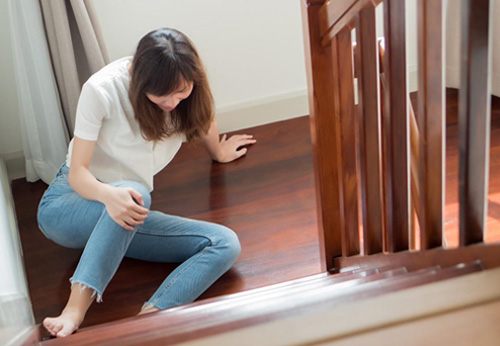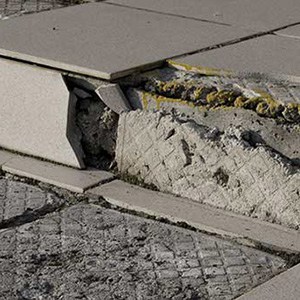 Slip and fall accidents are a common cause of personal injuries and can lead to severe consequences for the victim. In order to establish liability and seek compensation for injuries sustained, it’s crucial to have proper documentation. One essential piece of documentation is an incident report. This blog post will discuss the importance of incident reports in slip and fall cases in Georgia and provide an insight into the state’s premises liability law.
Slip and fall accidents are a common cause of personal injuries and can lead to severe consequences for the victim. In order to establish liability and seek compensation for injuries sustained, it’s crucial to have proper documentation. One essential piece of documentation is an incident report. This blog post will discuss the importance of incident reports in slip and fall cases in Georgia and provide an insight into the state’s premises liability law.
Slip and fall accidents are a common occurrence and can happen to anyone, anywhere, at any time. They can happen in public places such as malls, restaurants, or grocery stores, or on private property such as homes or offices. The causes of slip and fall accidents are varied and can include wet or slippery surfaces, uneven or worn flooring, poor lighting, and debris or clutter on the floor.
Wet or slippery surfaces can result from spills, leaks, or wet weather conditions. When floors are not properly cleaned or dried, they can become hazardous and lead to slip and fall accidents. Similarly, uneven or worn flooring, such as loose tiles or torn carpeting, can cause individuals to trip and fall. Poor lighting in dimly lit areas or areas with inadequate lighting can also contribute to slip and fall accidents. Debris or clutter on the floor, such as boxes, bags, or equipment, can obstruct walkways and cause individuals to trip and fall.
In Georgia, premises liability law is a crucial component of personal injury cases, particularly with respect to slip and fall accidents.  This law governs the responsibility of property owners and managers for ensuring that their premises are safe and free from hazards that could potentially cause harm to visitors, customers, and other individuals on the property.
This law governs the responsibility of property owners and managers for ensuring that their premises are safe and free from hazards that could potentially cause harm to visitors, customers, and other individuals on the property.
Under Georgia’s premises liability law, property owners and managers have a duty of care to maintain their property in a reasonably safe condition. This includes conducting regular inspections, promptly addressing any hazards, and providing adequate warning signs to alert individuals to potential dangers. Failure to uphold this duty of care can result in negligence on the part of the property owner or manager.
In a slip and fall case, the plaintiff has the burden of proving that the property owner or manager was negligent and that the negligence caused their injury. This can be a difficult task, as the plaintiff must provide evidence that the property owner or manager knew or should have known about the hazardous condition that caused the accident. This is where an incident report becomes a vital piece of evidence.
For the most common type of injuries from a slip and fall incident in Georgia Read Here
An incident report is a crucial document created by a property owner, manager, or employee to meticulously record the details of an accident, injury, or other unexpected events that transpire on their property. This report serves as an essential tool for documenting incidents, aiding in investigations, and potentially protecting property owners and managers from legal liabilities.
An effective incident report should include:
Witness statements can provide valuable insights into the incident and help establish liability. They can also corroborate the victim’s account of the event, strengthening their case. For more about the role of witnesses and their statements click HERE.
An incident report serves as a written record of a slip and fall accident, providing crucial details that help establish the facts of the case. This documentation is essential in demonstrating negligence on the part of the property owner or manager, as it can show that they knew or should have known about the hazardous condition, fulfilling the negligence requirement for a premises liability claim. Furthermore, an incident report preserves the details of the accident, ensuring that crucial information is not lost or forgotten over time.
By providing a detailed account of the incident, an incident report can assist in determining liability and support the injured party’s claim for compensation. In addition, an incident report can serve as strong evidence in negotiations with insurance companies or in court, ultimately increasing the likelihood of a favorable outcome for the injured party. Overall, the incident report plays a critical role in building and strengthening a slip and fall case, from establishing the facts to determining liability and securing compensation.
To gather information for a slip and fall case, there are several steps that can be taken. One of these steps is to request an incident report from the property owner or manager. This report serves as an essential tool in documenting the details of the incident and establishing liability. If the property owner or manager refuses or does not have an incident report, you can draft your own report with the information you collected at the scene.
Another way to gather information is to obtain a copy of the police or emergency services report. If these authorities were called to the scene, their report can provide valuable details about the incident, including any witness statements, photographs, or other evidence. By reviewing this report, you can gain a more comprehensive understanding of the circumstances surrounding the accident and potentially strengthen your case. Overall, requesting an incident report and obtaining a police or emergency services report can be critical steps in building a strong slip and fall case.
In the absence of an incident report, it is essential to gather alternative documentation and evidence to support your slip and fall claim. This can include photos, videos, medical records, and witness statements, which will serve as crucial pieces of evidence in building a strong case. Proactively documenting the scene and your injuries is critical for preserving evidence and bolstering your case, as it can help demonstrate the severity of the injuries and the hazardous conditions that led to the accident.
In addition to gathering evidence, seeking legal advice from a personal injury attorney experienced in slip and fall cases is highly recommended. Consulting with an attorney can guide you through the process, ensuring your rights are protected and providing invaluable advice on how to maximize your chances of receiving fair compensation. By taking these steps, you can effectively navigate the complexities of a slip and fall case and increase the likelihood of a favorable outcome.
footwear with good traction, paying attention to their surroundings, and avoiding walking on wet or slippery surfaces. In addition, using handrails when available and taking it slow on stairs can also reduce the risk of a slip and fall injury.
However, property owners and managers also have a responsibility to take measures that reduce the risk of slip and fall injuries. This includes regularly inspecting their premises for potential hazards such as uneven surfaces, loose flooring, or inadequate lighting. If hazards are identified, they should be addressed promptly to prevent accidents from occurring.
In addition to regular maintenance, property owners and managers should also provide appropriate warnings or barriers around potential hazards. This can include placing warning signs around wet floors or closing off areas with uneven surfaces. By taking these steps, property owners and managers can fulfill their responsibilities to maintain a safe environment for visitors and reduce the risk of slip and fall injuries.
Overall, both individuals and property owners/managers have a role to play in reducing the risk of slip and fall injuries. By working together and taking appropriate precautions, we can create safer environments and prevent accidents from occurring.
Incident reports play a crucial role in slip and fall cases in Georgia, as they help establish the facts of the incident, demonstrate negligence, and strengthen the victim’s case for compensation. Whether you’re a property owner, manager, or someone who has experienced a slip and fall accident, understanding the importance of incident reports is essential for navigating the legal process.
 If you or a loved one has been injured in a slip and fall accident in Georgia, it’s vital to seek the help of experienced personal injury attorneys like Scott S. Cohen and Thomas C. Sinowski, II from Cohen & Sinowski. With their expertise in personal injury law, they will guide you through the process and ensure your rights are protected.
If you or a loved one has been injured in a slip and fall accident in Georgia, it’s vital to seek the help of experienced personal injury attorneys like Scott S. Cohen and Thomas C. Sinowski, II from Cohen & Sinowski. With their expertise in personal injury law, they will guide you through the process and ensure your rights are protected.
Don’t hesitate to contact Cohen & Sinowski for a free consultation at 404-351-8888 or email Thomas@candspc.com. Visit their website at www.cohensinowski.com and remember, there’s no fee unless they win your case. Reach out today and let them help you get the compensation you deserve. #localmatters